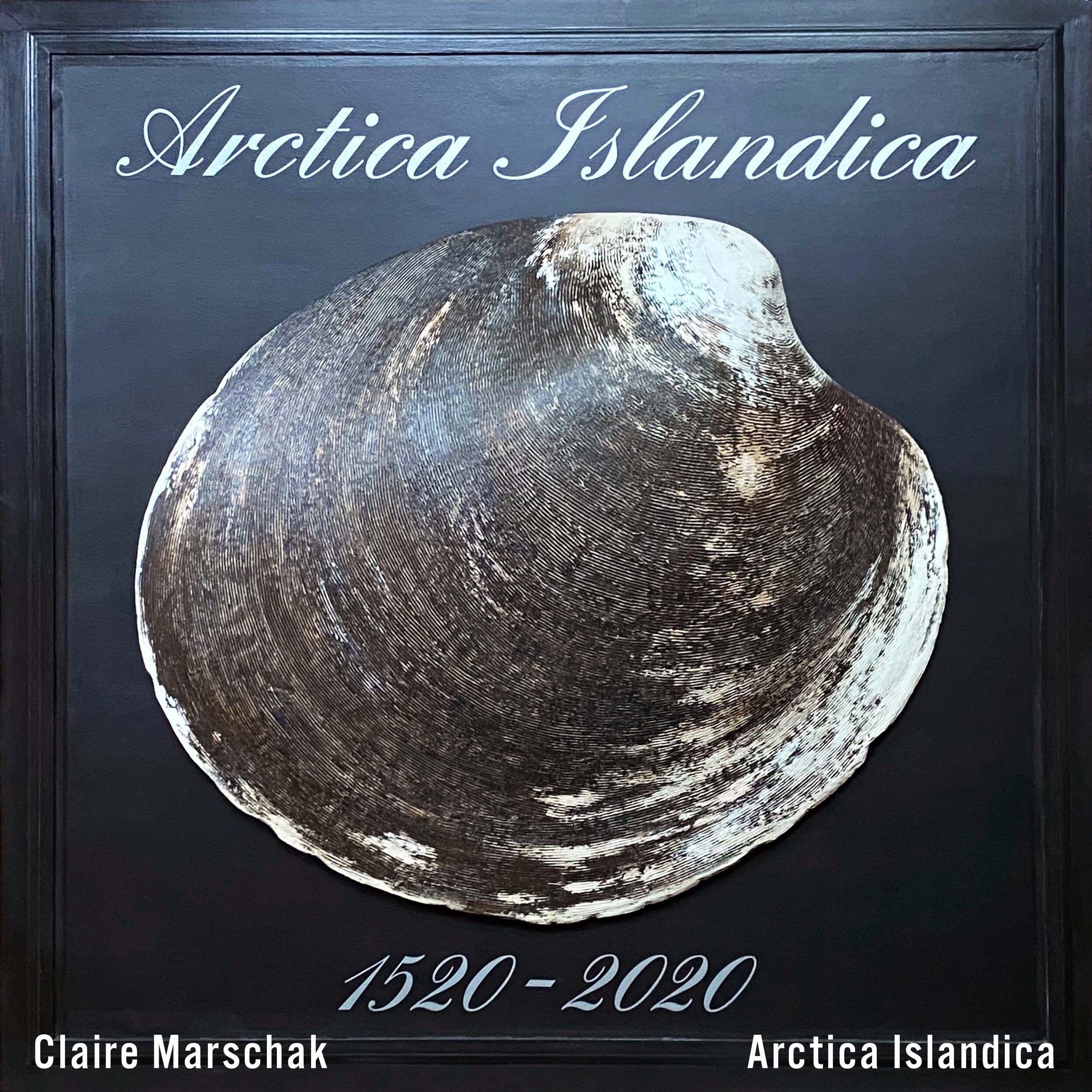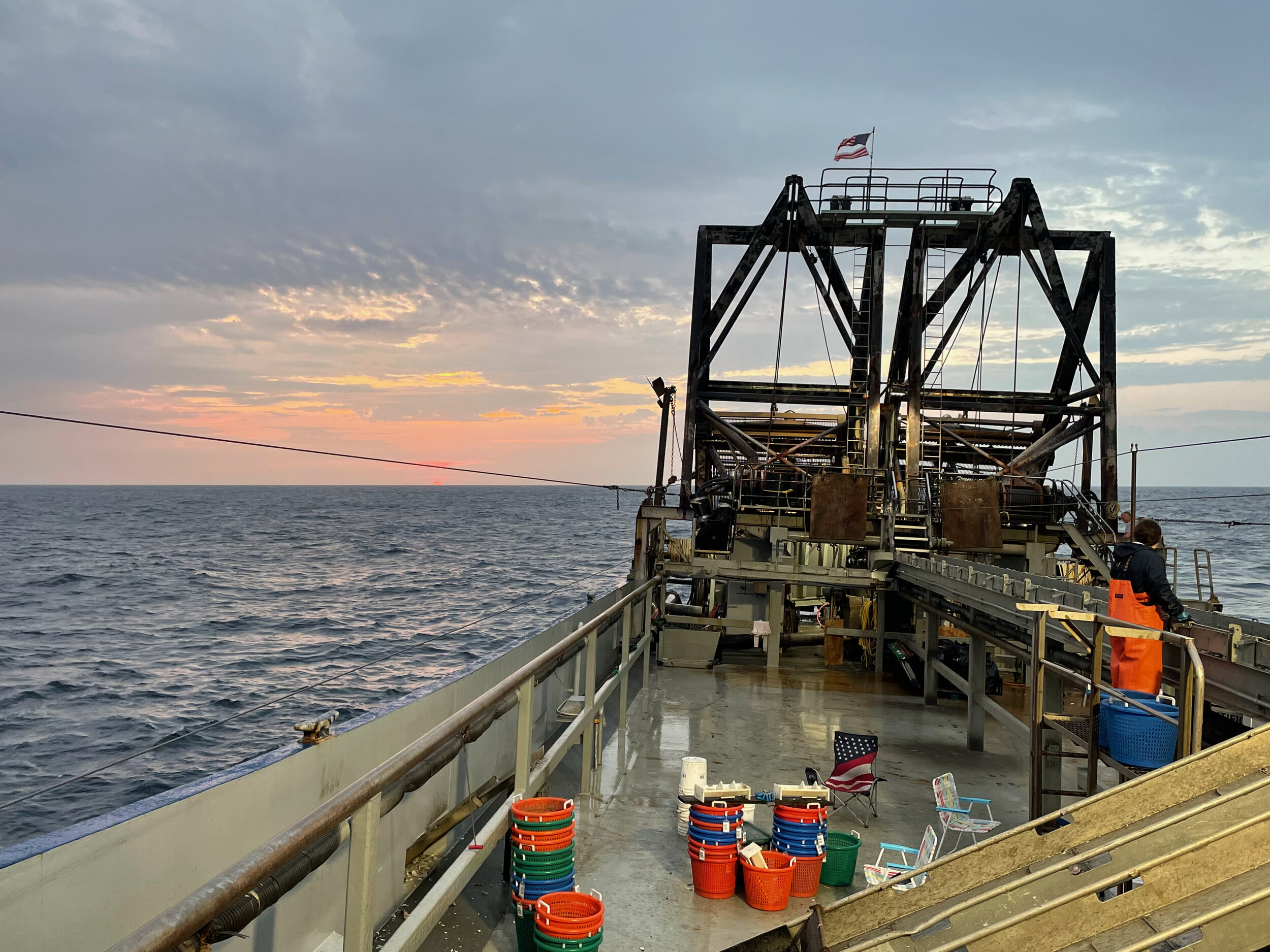
Arctica Islandica
by Claire Marschak & Nina Whitney, Phd
Above: “Arctica Islandica” — Claire Marschak
Arctica Islandica is a large-scale Painted Relief Sculpture that shows the immense importance of the longevity of ocean quahogs and their role in marine science.
MEDIUM
Multimedia relief sculpture
PIECES
One finished, one planned
TOPIC
Paleoceanography, paleoclimatology, and arctica islandica
LOCATION
Area of research is the Gulf of Maine and the Mid-Atlantic Bight. Area of impact is the western North Atlantic Ocean
"Arctica Islandica" — Claire Marschak
Science that spans centuries
The study of geology and paleoclimate forces one to think beyond one’s lifetime, one’s parents lifetime, and, in some cases, beyond the lifetimes of any human to ever walk this Earth. It is both a sobering perspective and an empowering one: humans take up a very minuscule portion of Earth’s history and, at the same time, have had a gigantic impact on that history. In particular the climate history will have an effect and be forever preserved in the rock and fossil record. Because reliable instrumental records of ocean and climate conditions have only existed for the last 150 years, paleoclimate reconstructions, such as those done using ocean quahog (Arctica islandica) shells, are necessary in order to understand past changes in the Earth’s ocean and climate systems and how they operate. Such an understanding is needed for predicting future changes to Earth’s oceans and climate, and forces us to confront just how unique and significant the current climate crisis is.
In the field
Photos from scientist Nina’s research at sea about ocean quahogs. Photos courtesy of Nina Whitney.

Clams in a bucket

Scientist Nina sorting clams

A clam at sunrise

The boat Nina's team used
Goals of the Project
Nina’s hope with this project is to convey that context and perspective to the viewer through the visualization of the scientific research that she is involved with: studying the humble clam. A clam that one finds on the beach may look inconsequential and is easily passed over, but the reality below the shell surface is that these particular clams, Arctica Islandica, provide us with hundreds of years of perspective of earth’s climate and ocean history.
After immersing herself in Nina’s scientific research of Arctica Islandica, Claire was amazed by how special this small but mighty clam is as an archival tool. This marine bivalve is the longest-lived, non-colonial animal known, with a possible lifespan of over 500 years. Much like tree rings, they produce annual growth lines. The cross-section of these shells provides centuries-long records of changes in water properties via geochemical composition, insight into ocean circulation dynamics, and ultimately the long-term studies of climate variability.
Claire Explains
What were the steps to creating this gargantuan relief sculpture? Check out the video to see a deeper explanation of the processes that went into creating “Arctica Islandica.”
The Making of “Arctica Islandica”
As an Industrial Designer, Claire welcomes the challenge of problem solving and model making. As an Artist, she strives to evoke emotion through her paintings. Claire’s goal is to present to the audience how necessary and interesting this research is. She plans to create two works of art that are relatable and tell a story. The large-scale painted relief sculpture of the “Arctica Islandica ” is meant to elevate it as an object of elegance. Working on this project has been so satisfying and has opened Claire’s eyes to the relevant research of the oceanographic scientific community. Her desire is to impress on the viewer the immense importance of the longevity of this ocean clam and its role in marine science.
The process of creating this sculpture was new to Claire, and she enjoyed experimenting with materials and techniques. Nina supplied her with photo reference, from which Claire made a quarter-scale model and templates to construct a topographical half shell using layers and layers of foam core. These were glued and screwed together, then carved and shaped with an X-Acto knife, files and sandpaper. Many coats of spackle and wood putty were smoothed over the surface, sanding in between layers. A final coat of acrylic molding paste was applied with a texture comb to create ridges typical of a clam shell.
Then the painting process began. Claire used a technique called glazing to paint many thin layers of transparent oil paint with ultramarine blue, alizarin crimson, phthalo green, and raw umber. This application of color simulated the rich patina of the dark protein layer, a distinctive feature of this ocean quahog. Scumbles of white were added to create the look of chipping and abrasion. A final assembly to a wood backing board allowed it to bolt to the panel for display.
What’s Next?
This sculpture will be paired with a cross-section infographic timeline titled “500 Years in the Life a Clam”. This piece will highlight historical, environmental, and societal events from the year 1520 to 2020.
Claire & Nina
To find out more about the artist and scientist who are behind this project, visit their section of the Artists & Scientists page via the link below.

